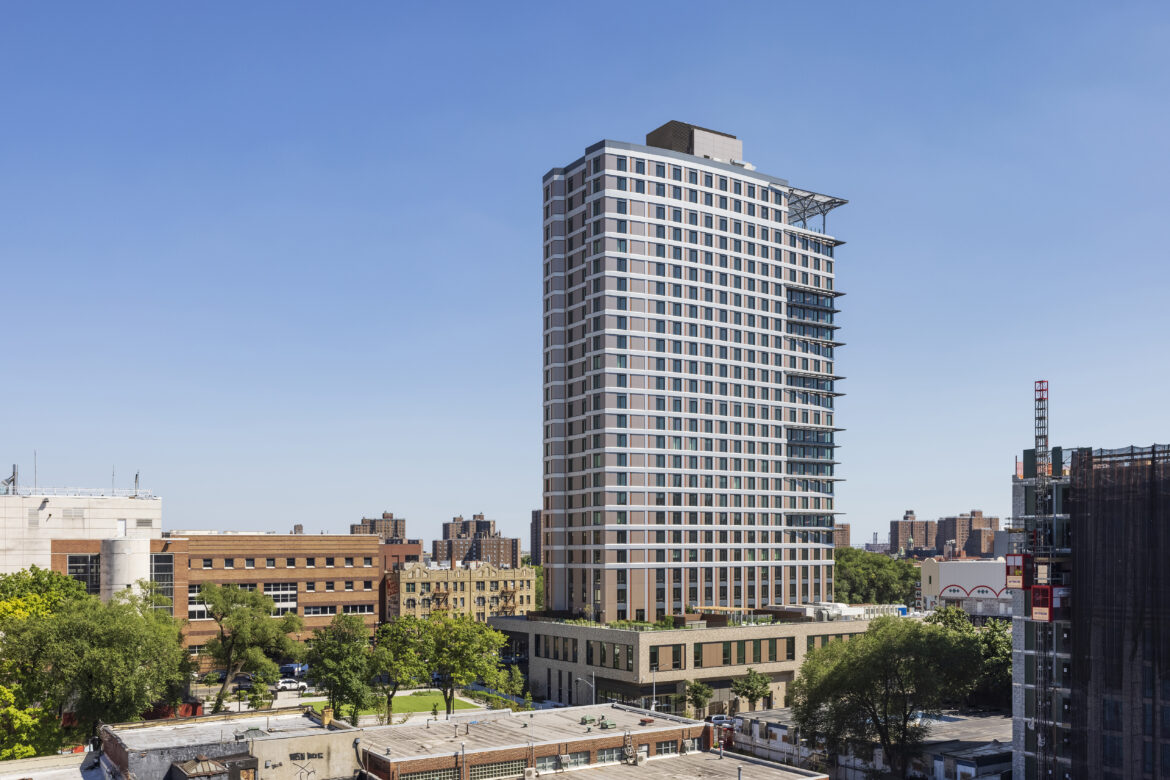
Opinion: Real Estate Industry Plays Key Role in New York’s Sustainability Plans
“The real estate industry will play a key role in implementing these new standards and must move quickly to do so. That task might seem daunting, but the affordable housing sector has demonstrated that sustainable construction is both feasible and financially viable.”

Albert Vecerka/ESTO
425 Grand Concourse, in the Bronx, an affordable project by Dattner Architects and Trinity Financial, deemed largest certified passive house project in North America.
New York is further solidifying its role as a leader in combating climate change with its recently passed first-in-the-nation ban on natural gas and fossil-fuel hookups in the construction of many new multifamily properties.
The long-term benefits of this policy cannot be overstated when it comes to meeting New York’s ambitious goal of a net-zero carbon economy by 2050, as required by the 2019 Climate Leadership and Community Protection Act (CLCPA). It also sets a high—but achievable—bar against which other states should be measured.
The real estate industry will play a key role in implementing these new standards and must move quickly to do so. That task might seem daunting, but the affordable housing sector has demonstrated that sustainable construction is both feasible and financially viable—and we’ve done so in an extraordinarily short time frame.
In fact, most new affordable housing built in New York over the past several years have foregone new gas hookups, and many have been built to Passive House standards. That includes the Bronx’s Park Avenue Green—the largest Passive House affordable housing property in the United States.
There are, of course, challenges to overcome. Right now, for example, most furnaces and boilers throughout the state run on natural gas and oil, accounting for about 42 percent of the total greenhouse emissions in New York City alone. The CLCPA requires New York to reach 100 percent zero-emission electricity by 2040.
But we must act, because we know that the built environment alone accounts for 40 percent of all annual global CO2 emissions. If we do our part, we will make a significant dent in the reductions necessary to meet New York’s climate goals. The ban on natural gas in new construction is a good step forward. But it is not all that needs to be accomplished.
We also need to focus on retrofits and other smart ways to reduce emissions from buildings currently powered by fossil fuels. Several policy proposals under consideration would support and amplify the nascent sustainability revolution underway in the housing sector.
New York City, for example, is working to tweak its zoning with the City of Yes Carbon Neutrality zoning text amendment to allow developers to retrofit existing buildings to reduce their carbon footprint. Changes would encourage rooftop solar panel installation, facilitate retrofits of affordable housing with exterior insulation, and reduces obstacles to converting buildings to heat pumps.
It is against this backdrop that we will be convening leading industry practitioners, public policy experts, and government officials to discuss how our industry can continue to lead the way at New York State Association for Affordable Housing’s annual conference in New York City, during which sustainability will be a primary focus.
Our main goal in the affordable housing industry is to produce healthy, affordable communities for all, and sustainability is crucial to accomplishing that. These new environmental initiatives will help advance racial equity and reduce socioeconomic discrimination in New York. Research finds that people of color and low-income households are disproportionately exposed to toxic environments, resulting in higher rates of asthma for many residents. And decades of land use decisions pushed subsidized housing into low-lying land, putting those properties, and their residents, at high risk of environmental damage due to climate change.
As we chart forward on this path for innovation and sustainability, real estate industry leaders need the opportunity, space, and support to learn and develop more efficient approaches to creating infrastructure. Through collaboration and investment, we hope to build our environment to promote the equitable and sustainable home that New Yorkers deserve.


